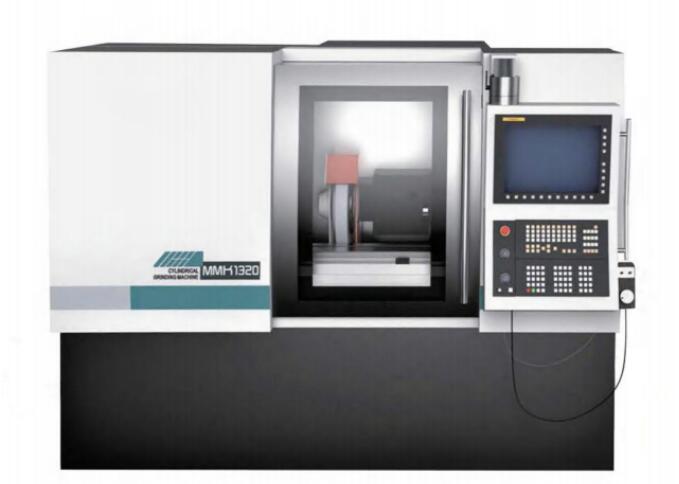
1. Longitudinal grinding method
Longitudinal grinding method is the most commonly used grinding method. During grinding, the worktable is fed longitudinally and the grinding wheel is fed periodically. The grinding allowance of the workpiece must be ground in multiple reciprocating strokes.
Features of longitudinal grinding method (abbreviated as longitudinal method):
1) In the entire width of the grinding wheel, the working conditions of the abrasive grains are different. The sharp corners of the left end face (or right end face) of the grinding wheel bear the main cutting action. Most of the abrasive particles in the width of the grinding wheel are responsible for reducing the surface roughness value of the workpiece. The longitudinal grinding method has low grinding force, good heat dissipation conditions, and can obtain higher machining accuracy and smaller surface roughness values.
2) Low labor productivity.
3) Small grinding force, suitable for grinding slender, precise or thin-walled workpieces.
2. Cut into the grinding method
The plunge grinding method is also called the transverse grinding method. The length of the outer circumference of the workpiece to be ground should be less than the width of the grinding wheel. During grinding, the grinding wheel makes continuous or intermittent lateral feed movement until all the allowance is ground. There is no longitudinal feed motion when grinding wheel. A higher cutting speed can be used for rough grinding; a lower cutting speed for fine grinding to prevent burns and thermal deformation of the workpiece.
Features of plunge grinding method (referred to as plunge method):
1) The working conditions of the abrasive grains on the entire width of the grinding wheel are the same, giving full play to the grinding effect of all abrasive grains. At the same time, due to the continuous lateral feed, the basic time of grinding is shortened, so it has high production efficiency.
2) The radial grinding force is large, and the workpiece is prone to bending deformation. Generally, it is not suitable for grinding finer workpieces.
3) Large grinding heat is generated during grinding, and the workpiece is prone to burns and heat deformation.
4) The shape of the grinding wheel surface (dressing traces) will be copied to the surface of the workpiece, which will affect the surface roughness of the workpiece. In order to eliminate the above defects, a slight longitudinal movement can be made at the end of the cut-in method.
5) Due to the limitation of the width of the grinding wheel, the cutting method is only suitable for grinding the outer surface with a short length.
3. Segmented grinding method
Subsection grinding method is also called comprehensive grinding method. It is a comprehensive application of the cut-in method and the longitudinal method, that is, the workpiece is coarsely ground in sections by the cut-in method first, leaving a margin of 0.03-0.04mm, and finally the longitudinal method is used for fine grinding to size. This grinding method not only takes advantage of the high production efficiency of the cut-in method, but also has the advantage of high machining accuracy of the longitudinal method. When grinding in segments, there should be an overlap of 5-10mm between two adjacent segments. This grinding method is suitable for workpieces with better grinding allowance and rigidity, and the length of the workpiece should be appropriate. Considering the grinding efficiency, a wider grinding wheel should be used to reduce the number of segments. The best condition is when the length of the machined surface is about 2 to 3 times the width of the grinding wheel.
4. Deep grinding method
This is a more commonly used grinding method, which uses a larger back feed to grind all the grinding allowances of the workpiece in one longitudinal feed. As the basic grinding time is shortened, labor productivity is high.
Features of depth grinding method:
1) Suitable for grinding rigid workpieces
2) The grinder should have greater power and rigidity.
3) When grinding, a small unidirectional longitudinal feed is used. The longitudinal feed direction of the grinding wheel should face the headstock and lock the tailstock sleeve to prevent the workpiece from falling off. The hardness of the grinding wheel should be moderate and have good grinding performance.


